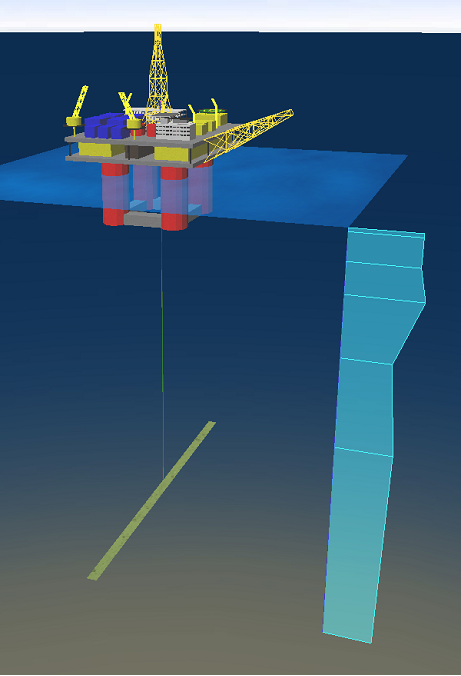This example considers the riser system of a TLP vessel situated in 350 m of water. Two risers are included in the project, a drilling riser and a production riser. The main objective of the analysis is to accurately determine the clearance between the risers, taking wake interference effects into account. The upstream (drilling) and downstream (production) risers are defined in separate models as they are structurally independent. The drilling riser model, including a schematic of the applied current profile, is shown in the figure below.
The analysis sequence considers the drilling riser first in order to determine its static configuration subject to static current loading and VIV drag data. The VIV drag data is obtained independently, by running a Shear7 analysis. Next, the production riser is considered. An initial static analysis is performed, and this is then followed by a current static analysis in which the wake effects from the drilling riser are considered. The wake effects are modelled using Blevins, (2005) formulation. This applies a reduced current on the downstream riser, in addition to a lift force which attempts to align the risers in the direction of the applied current.

Drilling Riser and Current Profile